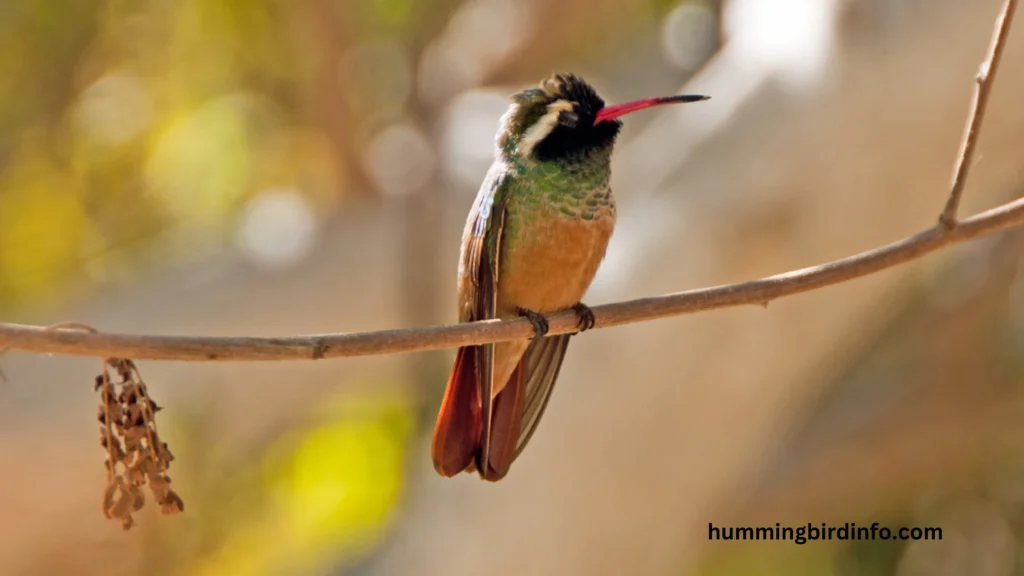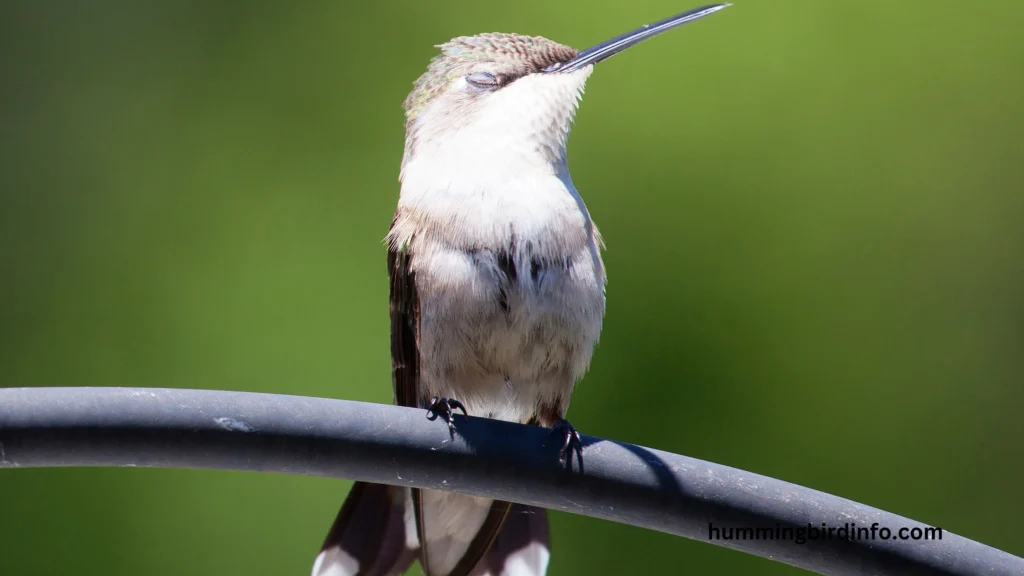Hummingbirds seem like creatures of endless motion—darting, hovering, and zipping from flower to flower with dazzling grace. Their wings beat up to 80 times per second, and their tiny hearts race at a pace that could power a jet engine.
But behind this energy-packed performance lies an intriguing question: how do they rest?
Unlike humans or most animals, hummingbirds don’t just “sleep” in a typical way. Given their extremely high metabolism, simply resting isn’t enough to prevent them from starving overnight.
So how do they conserve energy? The answer lies in one of nature’s most fascinating survival strategies: a temporary state called torpor.
This blog takes you deep into the mystery of hummingbird sleep, explaining how torpor works, what happens to their bodies, and why this process is so vital for their survival. If you’ve ever wondered how these tiny birds make it through the night, you’re about to find out.
Contents
- 1 Torpor – The Survival Sleep Mode
- 2 What Happens Inside a Hummingbird During Torpor
- 3 Why Torpor Matters – Evolution’s Energy Hack
- 4 How and When Hummingbirds Enter and Exit Torpor
- 5 The Future of Torpor Research – What We Still Don’t Know
- 6 Conclusion
- 7 FAQs
- 8 1. Do hummingbirds actually sleep?
- 9 2. What time do hummingbirds go into torpor?
- 10 3. How long does torpor last in hummingbirds?
- 11 4. Can hummingbirds die in torpor?
- 12 5. What does a hummingbird look like in torpor?
- 13 6. How do they wake up from torpor?
Torpor – The Survival Sleep Mode
Torpor is not regular sleep—it’s a deep physiological shutdown that allows hummingbirds to survive when food and warmth are scarce. During torpor, a hummingbird’s body temperature drops, its heart rate slows dramatically, and its metabolism nearly halts.
Unlike hibernation, which lasts weeks or months, torpor is short-term, often lasting just one night. It’s a daily strategy used by many hummingbird species to make it through cold nights or food shortages. Scientists call this “daily torpor”, and it’s a critical tool in the hummingbird’s survival kit.
Sleep, by contrast, still allows for some neurological activity, while torpor turns the body into a state of near suspended animation. Their metabolic rate can drop to just 5-10% of normal, helping them conserve precious energy until sunrise.

What Happens Inside a Hummingbird During Torpor
Once in torpor, a hummingbird’s body temperature can drop from 104°F (40°C) to as low as 48°F (9°C)—a nearly cold-blooded state. This temperature shift drastically reduces energy consumption, allowing them to survive a night without feeding.
Their heart rate, usually around 1200 beats per minute, slows to as low as 50 beats per minute. The breathing rate also drops dramatically, sometimes with long pauses between breaths that would be fatal for most animals.
Their muscles relax, and they become completely motionless, often appearing dead to the untrained eye. In this state, the bird is highly vulnerable, so it chooses safe, sheltered spots for the night. This deep rest is what allows them to function again the next day with full energy.
Why Torpor Matters – Evolution’s Energy Hack
Without torpor, hummingbirds would burn through their energy reserves in just a few hours. Their tiny size and hyperactive lifestyle make constant fueling a necessity, and torpor gives them a break when food is unavailable.
This adaptation is especially useful during cold nights, bad weather, or migration periods. When nectar is scarce or energy is hard to find, torpor becomes their emergency energy-saving tool.
But it’s not without risks—predators, exposure to cold, or being too weak to awaken quickly can pose dangers. Still, evolution has balanced these risks, allowing hummingbirds to thrive in diverse climates and expand their range farther than they otherwise could.
How and When Hummingbirds Enter and Exit Torpor
Hummingbirds usually enter torpor just after sunset, especially if the temperature drops or if they haven’t consumed enough nectar or insects during the day. Their internal clocks, influenced by circadian rhythms, help trigger this shift.
They typically choose protected places like tree branches, under leaves, or tucked into dense foliage. These spots shield them from wind, rain, and potential predators while their bodies lie defenseless.
Awakening from torpor is energy-intensive. It takes between 20 and 60 minutes, depending on depth of torpor and temperature. The bird shivers and rapidly raises its metabolism, heart rate, and body temperature. Once awake, it immediately feeds to replenish lost energy.

The Future of Torpor Research – What We Still Don’t Know
Researchers are just beginning to understand the complex brain and hormonal mechanisms behind torpor. Recent studies using thermal imaging and tiny telemetry devices have provided insights into how hummingbirds modulate their body heat.
There’s also evidence that hummingbirds can use “shallow torpor”, a lighter version of the state that allows for quicker recovery and less vulnerability. This flexibility could explain how they survive in such varied environments.
Future studies may reveal how climate change, urbanization, and habitat loss affect hummingbirds’ ability to enter torpor. Understanding this unique sleep strategy might not just help us protect hummingbirds—it could inspire new energy conservation methods in science and medicine.
Conclusion
Hummingbirds don’t just sleep—they enter a life-saving state of torpor, reducing their metabolic rate, slowing their hearts, and nearly freezing in place. This remarkable adaptation is their secret weapon for surviving the night.
Torpor allows hummingbirds to overcome their high energy demands, especially when food is limited or temperatures plummet. Though it leaves them vulnerable, the evolutionary payoff has been enormous, helping these birds expand their territories and thrive in challenging habitats.
To protect hummingbirds, we must create safe, food-rich environments, avoid pesticide use, and support further research into their behavior. These tiny powerhouses continue to captivate scientists and bird lovers alike, not just for their speed—but for the incredible ways they rest.
FAQs
1. Do hummingbirds actually sleep?
Yes, but they sleep in the form of torpor, which is a much deeper rest state than normal sleep.
2. What time do hummingbirds go into torpor?
They typically enter torpor at night, right after sunset, when temperatures drop and food is unavailable.
3. How long does torpor last in hummingbirds?
Torpor usually lasts overnight, ranging from 6 to 10 hours, depending on weather and energy levels.
4. Can hummingbirds die in torpor?
Yes, if they are too cold, predated upon, or can’t rewarm properly, they may not survive.
5. What does a hummingbird look like in torpor?
They appear lifeless, fluffed up, with closed eyes, and may be hanging motionless on a branch.
6. How do they wake up from torpor?
They gradually increase their metabolism, begin shivering, and raise their body temperature over 20–60 minutes.








